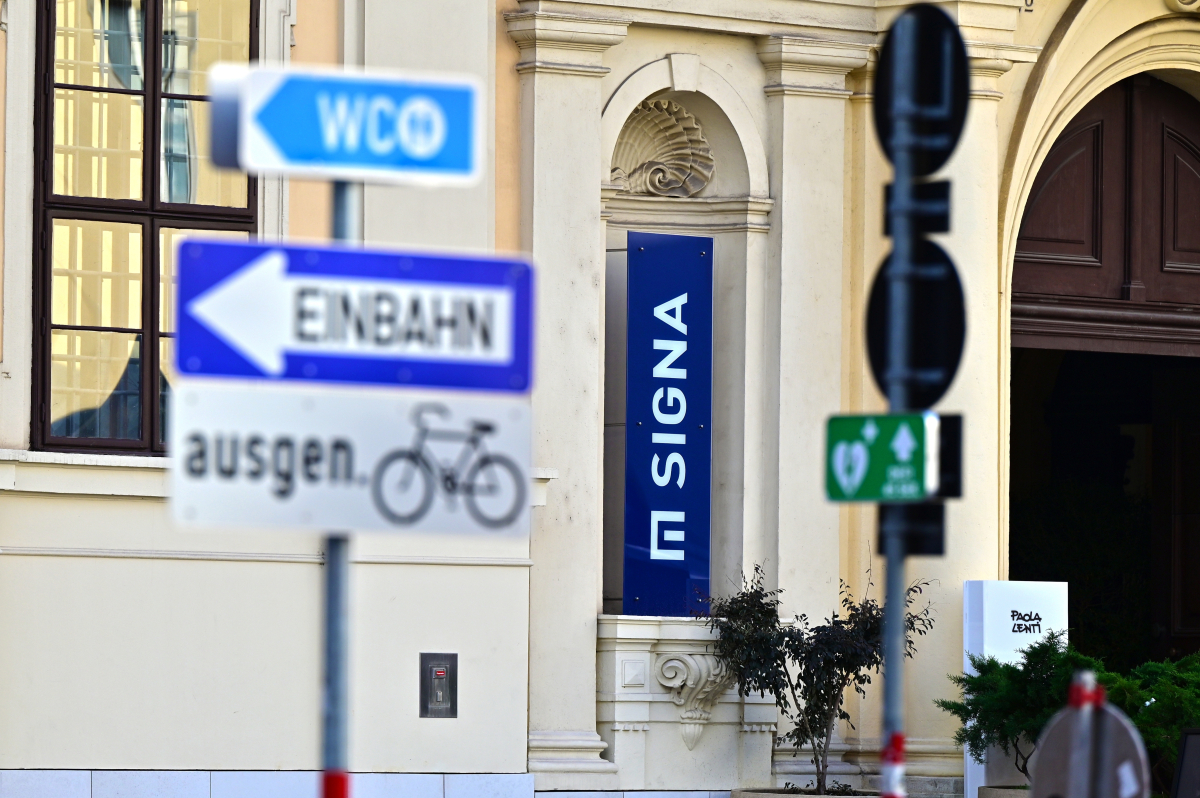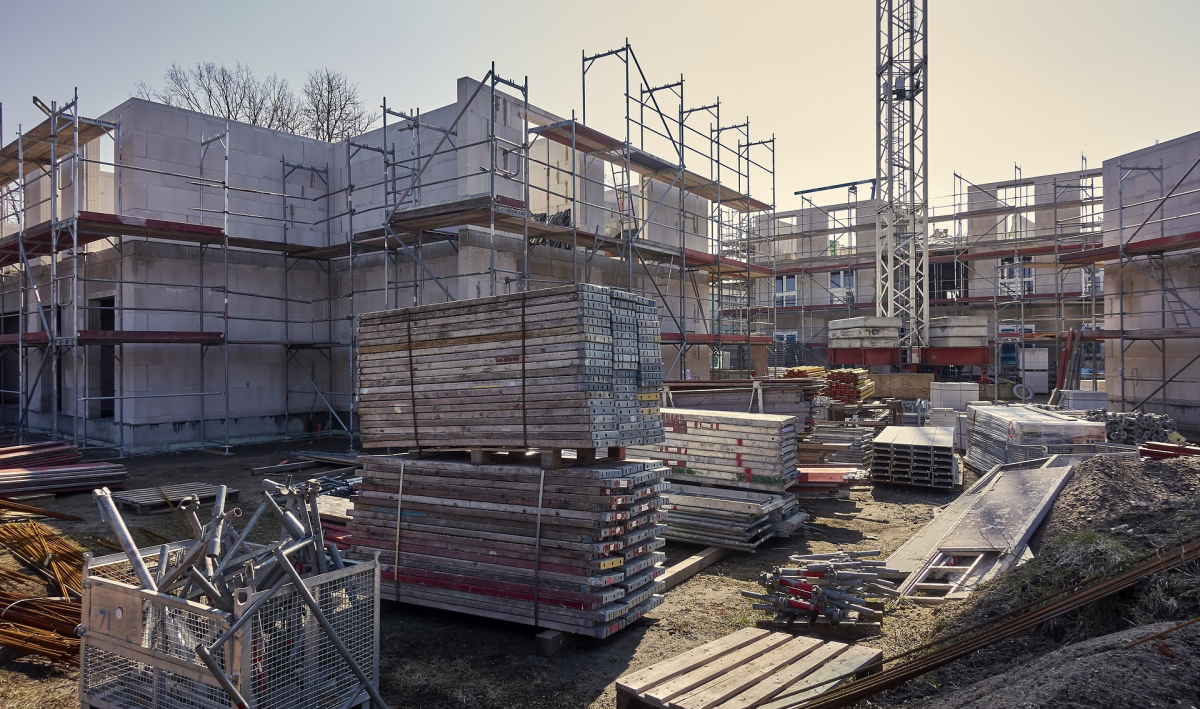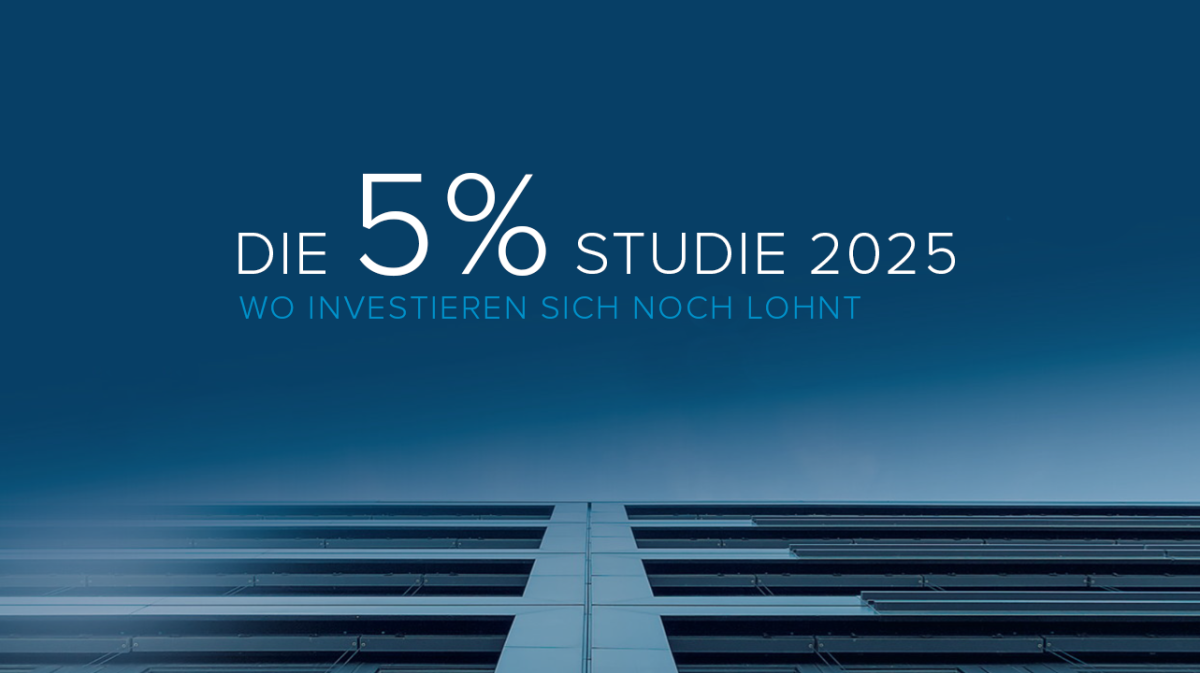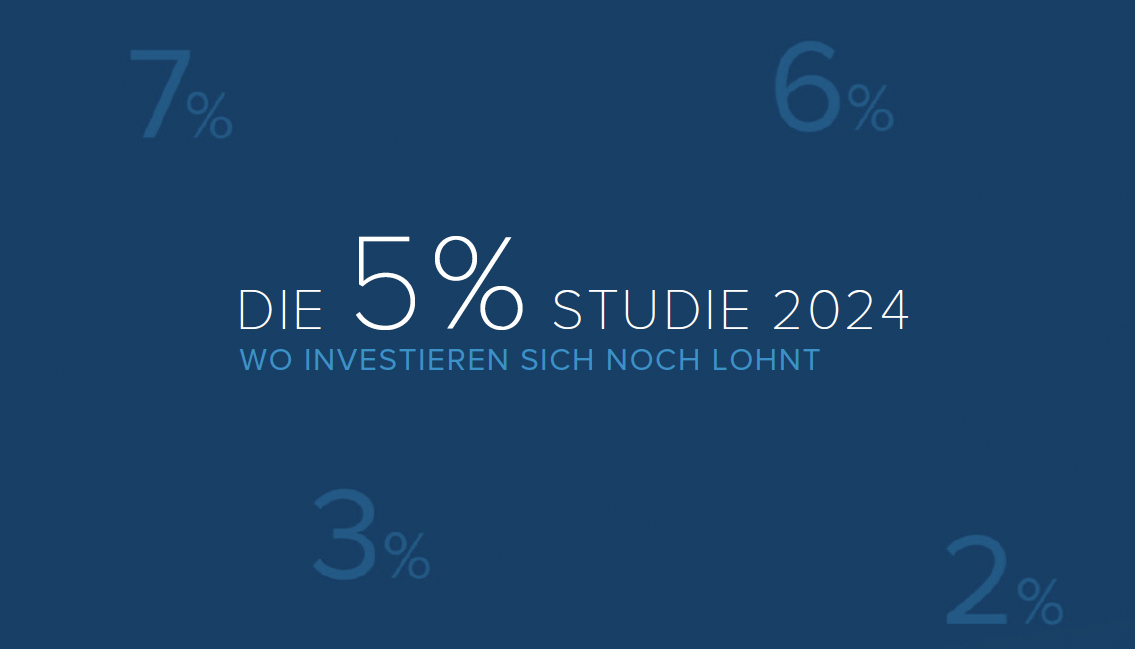Five per cent returns no longer illusory even for core properties
The ‘5% study - where investing is still worthwhile’ celebrates its tenth anniversary. Since the first edition was published, the German property market has tarnished its reputation as a safe investment haven. Higher yields are now within sight, even for prime properties, and even residential property is increasingly becoming a profitable asset class again. The market is more exciting than it has been for a long time
With the kind support of the law firm ADVANT Beiten, we have analysed the yield potential of the German property markets for the tenth time. The 5% study determines the probable internal rate of return (IRR) of an investment assuming a holding period of ten years. This makes it possible to calculate annual returns or interest rates for investments and compare the earnings prospects of different asset classes.
The property world has changed over the past ten years: At the time of the first edition of the ‘5% Study’ in 2015, a yield of 3.5% was considered the market standard for a core office property in the A markets (in 2021, it was as low as 2.1%) - now the German property market's reputation as a safe haven for investment has been drastically shaken.
The turnaround in interest rates has brought about a fundamental change in yield expectations - five per cent no longer seems illusory, even for core products, i.e. properties with a stable letting situation and sustainable location parameters. This paradigm shift has left some players with significant wounds; however, one positive aspect is that a sustainable cash flow perspective is once again taking centre stage for real estate.
Residential property is increasingly becoming a profitable asset class again
The residential property market continues to present a very ambivalent picture from an investor's perspective. The new construction market continues to be characterised by past and new insolvencies in combination with project postponements. The shift of a large proportion of demand from the purchase to the rental market is further exacerbating the situation. The energy-related modernisation of existing properties also remains a challenge, meaning that prices will continue to vary. Transaction activity on the residential property market has come to a virtual standstill in recent years due to the development of interest rates.
However, the assumptions in the forecasts suggest that the market has bottomed out: stable inflation and a further fall in interest rates could breathe new life into the market, especially if financing conditions improve again as a result.
Compared to the previous year, yields in the A-market portfolios increased significantly. An IRR of 2.9% can be achieved here, compared to 2.44% in the previous year. The range for core properties extends from 2.1% to 3.4%. In the B markets and university cities, the yield level is around 10 and 20 basis points higher respectively. Acquisition yields are generally lower here, and any energy refurbishments have a significant impact due to the lower rent level.
Office markets: yields in city categories equalise
The German office markets continue to operate in a very challenging market environment. The economic recovery has yet to materialise and many companies are continuing to postpone their growth and investment decisions. Uncertainty about future price trends and the general conditions on the capital markets is reflected in the continuing rise in net initial yields, which currently average 4.5 % in A cities.
Despite the reduction in the base rate by 0.25 percentage points in June 2024, the investment market remained at a low level in the first half of the year. The question marks regarding future demand for office space and the need for investment in existing properties due to the increased need for energy-efficient refurbishment remain. They are therefore slipping further down the ranking of market liquidity.
Yields have risen significantly compared to the previous year: in the A markets by around 90 basis points to 4.1%, with up to 4.7% achievable in the core segment. The B and D markets follow with 4.6 % to 5.6 % (base values in each case).
The yield gap between the city categories has narrowed. The reason for this is the need for investment in existing buildings - in smaller markets, these costs have a greater impact on the annual yield, while rents are lower.
Retail: food remains a stabiliser
In 2023, retail sales in Germany reached a record level of 649 billion euros, which corresponds to nominal growth of 2.9 %. Nevertheless, the high inflation rate of 6% led to a real decline in sales of 3.4%, the largest since the turn of the millennium.
The development of city centres will remain exciting in the coming years. Cities are losing a massive number of retail outlets, entire shopping centres are shifting or being abandoned. The large chain stores are optimising their store network and concentrating on good locations. At the same time, space requirements are being reconsidered. The pressure on rents is growing.
Existing shopping centres are still virtually absent from the investment market. Shopping centres are generally only traded as repositioning projects, often with a multi-use perspective; pure existing properties are virtually absent from the transaction market. The situation is different for food retail centres, which generate high demand as (often small-scale) investments.
Retail parks with a distinctive range of periodic requirements are also valued more positively. However, there may be a need for repositioning, particularly in the case of larger properties with a broad tenant structure. The base value of the achievable IRR here is 4.3 % - up to 5.2 % can be achieved in the core segment.
Logistics properties: achievable yields correct slightly downwards
Demand for very good logistics properties remains at a high level, which means that rental prices are continuing to rise. Property quality is increasingly becoming a driving factor, also from an ESG perspective.
Although bulwiengesa's latest forecasts are positive in terms of tenant expectations for logistics properties, there are signs of less momentum than assumed last year. These lower growth rates will therefore also lead to a slightly lower IRR this year.
The base value is 4.4 %, the achievable range in the core area is 3.3 % to 4.8 % and thus roughly at the previous year's level.
Note: The study also covers the hotel, micro-apartments, Unternehmensimmobilien and assisted living asset classes.
Contact: Anna Wolfgarten, Consultant at bulwiengesa, wolfgarten@bulwiengesa.de and Sven Carstensen, Board Member, carstensen@bulwiengesa.de
You might also be interested in
For our magazine, we have summarized relevant topics, often based on our studies, analyses and projects, and prepared them in a reader-friendly way. This guarantees a quick overview of the latest news from the real estate industry.
Little movement on the German real estate market
For the eleventh time, bulwiengesa presents its comprehensive analysis of the German real estate markets. The results of this year's 5% study, conducted in collaboration with ADVANT Beiten, show that the German real estate market is characterized by widespread stagnation. At the same time, niche segments are becoming increasingly attractive. The market is increasingly rewarding professional asset management and specialist knowledge—a trend that separates the wheat from the chaffValuation for corporate insolvencies
In turbulent times, more companies than ever are facing insolvency. According to our data alone, this affects around 400 project developments and countless existing properties. Ideally, valuations for insolvency administrations show more than the actual valueProject developments: Few in planning, many postponed
The crisis is now clearly visible among project developers. The market in the seven class A cities is declining, and the traditional project developers in particular are withdrawing from the market. Residential projects, of all things, are significantly affected. And: Many projects are being completed later than plannedInteresting publications
Here you will find studies and analyses, some of which we have prepared on behalf of customers or on our own initiative based on our data and market expertise. You can download and read many of them free of charge here.







